Disclaimer: Psilocybin is a largely illegal substance and we do not encourage or condone its use where it is against the law. However, we accept that illegal drug use occurs and believe that offering responsible harm reduction information is imperative to keeping people safe. For that reason, this guide is designed to enhance the safety of those who decide to use psilocybin.
Over 180 species of psilocybin mushrooms in the world contain naturally occurring psychoactive compounds. These “magic mushrooms” have a history of being utilized in spiritual and religious ceremonies and for mind-altering experiences.
This guide will explore the most popular psilocybin mushroom types, including Penis Envy, Liberty Caps, Golden Teachers, and more. Each psilocybin mushroom species varies in the amount of psilocybin and psilocin it contains–and the experience it provides. Psilocybin levels can range from 0.1% to almost 2%, with an average of around 0.8%.
What are Psilocybin Mushrooms?
Psilocybin mushrooms have been used by humans for centuries for recreational and spiritual purposes. They are naturally occurring fungi that contain the psychedelic compound psilocybin, which is closely related to the chemical compound serotonin.
Magic mushrooms also contain psilocin, a chemical indole hallucinogen affecting the neurotransmitter serotonin in the brain. Psilocin is much more bioactive than psilocybin, which actually transforms into psilocin once ingested. The effects of psilocin are similar to those produced by mescaline and LSD and can last for several hours.
In recent years, psilocybin mushrooms have been gaining increased attention for their potential therapeutic benefits and potential to treat mental health disorders like depression, anxiety, and PTSD
Whether you’re looking to understand the effects of psilocybin mushrooms or want to learn more about different varieties, enjoy this review of several common varieties of psychedelic mushrooms.
Psilocybin Mushroom Types: Top Species to Know
Here are some popular types of psilocybin mushrooms. While we include dosage guidelines for Psilocybe cubensis, there isn’t enough dedicated research on other strains to include that data for all of them.
1. Psilocybe cubensis
Psilocybe cubensis is a powerful psychedelic mushroom that is one of the most widely studied psychoactive mushrooms, known for producing powerful hallucinations, altered states of consciousness, and spiritual experiences.
What makes Psilocybe cubensis so special is its multiple strains, like Penis Envy and Golden Teachers, that vary in color, shape, and potency. Here are some popular varieties:
Penis Envy Mushrooms
Penis envy mushrooms can be identified by their large and bulbous stem, similar in shape to a human penis.
Penis envy mushrooms are more challenging to cultivate than other mushrooms and less tolerant to contamination. This mushroom is often used for microdosing because of its high potency.
Penis Envy mushrooms are particularly potent. When consuming this magic mushroom strain, you should lower your dosage by 30% for a manageable trip.
The average dosages for the penis envy mushroom:
- Microdose: 0.05g to 0.2g
- Mini-dose: 0.2g- 0.5g
- Museum: 0.5g to 1.0g
- Moderate: 1.0g to 2.0g
- Megadose: 2.0g to 3.0g
Watch the video below to learn more about penis envy mushrooms.
Golden Teacher Mushrooms
Golden teacher mushrooms have long, curving stems and wide caps. They are a popular choice for growers because they are easy to cultivate at home. Golden teachers have a moderate strength level.
With golden teacher and other medium-strength mushrooms, start at 0.5 to 1 gram. There usually won’t be any hallucinations at this dosage, but you’ll feel an enhancement in your mood and mental state.
If you’re looking for a stronger trip where you experience visual hallucinations, a reasonable dosage is 1-2 grams. Two grams allow the user to experience the effects without feeling overpowered or out of control. A higher dosage would start at three or more grams, and consuming more than five grams would be considered a macrodose and would lead to a full transcendent experience.
Always make sure that you have water, pillows, a blanket, a clear mind, and a sitter if you need one before going on a full trip. Learn more about Golden Teacher mushrooms in the video below.
Other Psilocybe cubensis strains
Here are other popular Psilocybe cubensis magic mushrooms strains:
- B+: This strain has large bodies and is very popular with cultivators. People have described this strain as lethargic and “middle of the road.”
- Tidal Wave: This strain combines both B+ and penis envy. They are fast-growing and considered to have the most psilocybin content in all of the cubensis strains.
- Cambodian: Has brown caps and small bodies. This strain grows in warmer conditions. They have also been said to have high-potency trips that are less visual but bring in more creativity.
Learn more about the top five strains of Psilocybe cubensis:
2. Psilocybe semilanceata (Liberty Caps)
Psilocybe semilanceata, or Liberty Caps, is a well-known magic mushroom that can be easier to find when foraging. You can find them in abundance in Europe, but they can also be found in North America, South Africa, Chile, Northern India, Australia, and New Zealand.
Liberty Caps are found in grassy areas, such as meadows and pastures, from late summer to early winter. They prefer damp soil and cooler temperatures, most commonly found in areas with mild, wet climates. However, these mushrooms can be grown both indoors and outdoors.
These mushrooms have long, thin stems and distinct, convex, bell-shaped caps, which is how they got their nickname.
Varieties: Psilocybe semilanceata pacific blue
Potency: Liberty caps contain .98 percent of psilocybin, .02 percent of psilocin, and .36 percent of baeocystin making this mushroom highly potent.
Experience: People who have tried P. semilanceata have reported that it creates a more intense “head high” than a “body high” and can lead to intense visual hallucinations.
3. Panaeolus cyanescens (Wavy Caps)
P.cyanescens is a saprophytic mushroom that feeds on decomposing material. Native to the West Coast of North America, these mushrooms are especially abundant in Oregon. They get their name from their large, caramel-colored caps, which have a wavy shape.
Psilocybe cyanescens mushrooms thrive in cold weather. It is easier to grow them outside, but it is possible to cultivate them indoors if you can keep the temperature right. These mushrooms can be grown in gardens and will likely do best around wood chips.
Varieties: Panaeolus bisporus, Panaeolus cambodginiensis, Panaeolus tropicalis, Panaeolus Australian, Panaeolus Florida
Potency: P. cyanescens has moderate strength, containing 0.85% psilocybin.
Experience: At high levels, users report experiences similar to those of taking DMT, such as spiritual encounters. Others have reported experiencing a body high, auditory and visual hallucinations, nausea, and euphoria.
4. Panaeolus cinctulus (Banded mottlegill)
The caps of Psilocybe cinctulus mushrooms can reach a diameter of up to two inches when fully grown. They start with a dome-like shape, then become flat as they mature. The color of the caps can change as the mushroom dries out. When moist, the caps are reddish-brown, and when dry, they become a creamy white.
Varieties: Panaeolus subbalteatus
Potency: Psilocybe cinctulus are considered about half as powerful as the typical Psilocybe cubensis variety. That means if you’re looking to microdose, your average dose will be closer to 2–3 grams instead of 1–1.5 grams.
Experience: The most commonly reported effect is vivid visual hallucinations. Seeing vibrant colors, people with larger eyes, or appearing almost cartoon-like, along with joy and happiness. Some have also said that their surroundings appeared to be moving in slow motion.
5. Psilocybe azurescens (Flying Saucer)
Psilocybe azurescens, also known as “flying saucer” mushrooms because of their broad, UFO-shaped caps, are native to North America. These mushrooms grow along coastal dunes close to rivers in the Pacific Northwest region of the United States, including Oregon, Washington, California, and British Columbia.
Paul Stamets, mushroom expert and renowned mycologist, describes their appearance best, noting that they have “caramel-colored” caps and stems that are “twisted, cartilaginous, silky white fibrous tissue.”
Varieties: Psilocybe azurescens hammond strain, Psilocybe azurescens elixir strain
Potency: Psilocybe azurescens are the most potent out of all the psilocybe species, containing the highest psilocybin content at 1.78%.
Experience: Consuming these mushrooms can lead to intense visual experiences, a heavy physical sensation, and profound changes to one’s perception of reality at moderate to high doses.
6. Psilocybe mexicana
Psilocybe mexicana, often called the “Mexican liberty cap,” is a bundle of tightly packed mycelium that can range in size from smaller than a pea to as large as an ostrich egg.
The color of the sclerotia appears to depend on the growing conditions and can range from a light yellow to a dark brown or even a blue hue in certain areas. Since they have irregular shapes, sizes, and colors, it can be difficult to identify them based on their sclerotia alone.
Varieties: Psilocybe mexicana jalisco, Psilocybe mexicana-A
Potency: The potency of Psilocybe mexicana can vary and will change depending on how it’s consumed, such as the method of consumption and whether it is raw or dried. However, the average amount of psilocybin was reported to between 0.22 to 0.38 percent.
Experience: It has been said the Mexican liberty caps can bring visual hallucinations and heighten overall moods, bringing on euphoria and happiness. Some have also said to feel giggly or laugh a lot when consuming them.
7. Psilocybe ovoideocystidiata
In 2007, mycologists Richard Gaines and Gaston Guzman identified the Psilocybe ovoideocystidiata mushroom based on samples taken in 2003 from wood chips alongside a trail in Evansburg State Park, Pennsylvania.
Like other species of psilocybe mushrooms that thrive in wood, Psilocybe ovoideocystidiata is a saprobic organism, meaning it obtains nutrients from decomposing organic material.
The caps of Psilocybe ovoideocystidiata are dome-shaped, sometimes with a small bump in the middle, and can grow up to 1¾ inches in diameter. When fresh, the cap color is orange-brown, but it lightens to a pale yellow when dried. The stem’s color can be pale off-white, with yellow, brown, or blue streaks.
Varieties: not specified
Potency: The average amount of psilocybin is 0.45%, psilocin is 0.13%, and baeocystin is 0.2% making it moderately potent.
Experience: The psychedelic effects of this mushroom include changes in perception, distortions in one’s sense of time, and feelings of joy.
8. Psilocybe caerulipes (Blue-Foot)
Known as the “forager’s delight,” but also extremely hard to find, Psilocybe caerulipes is a blue-footed magic mushroom spotted in the Northeast of the United States.
The most common appearance of this mushroom is blue, but it can also appear as a dark blue or black cap with a white stem.
Varieties: Panaeolus semiovatus, Panaeolina foeniseccii
Potency: In 2022 the National Library of Medicine conducted a study on mushrooms that contained psilocybin, and they discovered that Psilocybe caerulipes had between 0.2 and 0.6 percent of psilocybin and 0.05 to 0.3 percent of psilocin.
Experience: Users have reported having a positive experience due to feeling connected to other people, nature, and the universe. Other senses and feelings also become stronger.
9. Psilocybe allenii
These mushrooms are known for their hallucinogenic effects and have been used for centuries by Native American cultures for spiritual and medicinal purposes. Psilocybe allenii can be seen along the western coast of the United States, from Washington to San Francisco and often appear in large groups. We still don’t know where this species originated.
The caps of Psilocybe allenii have a caramel-brown color when wet that shifts to a yellowish-straw color as they dry out.
Varieties: Psilocybe allenii cyclone
Potency: Psilocybe allenii may contain up to 1.84 percent of psilocybin, which is highly potent, and anywhere from .04 to 1.81 percent of psilocin, depending on their environment.
Experience: Depending on how much you can tolerate, you will experience mild symptoms, including brighter colors, hallucinations outside of your direct vision, and short-term visual changes. The walls, ceiling, and artwork might appear to glimmer or shake. Also, your pupils can dilate, and your hands will become cold and clammy.
10. Gymnopilus luteus (Big Laughing Gym)
Gymnopilus luteus, also known as the Big Laughing Gym, is a popular edible mushroom that many people enjoy. Found in North America and other parts of the world, it’s a giant, orange-brown mushroom with a distinct peppery smell. It can be found in wooded areas, fields, and urban environments.
It is said that Gymnopilus luteus is a less potent hallucinogen than Psilocybe cubensis, but some records find it more potent. As is always the case with psilocybin, the mushroom’s potency varies, as does the user’s sensitivity.
Varieties: Gymnopilus luteofolius
Potency: Psilocin and psilocybin levels for this particular mushroom are higher than in other species, typically ranging from 0.1 to 0.5 percent of the total tryptamines when the mushrooms are dried.
Experience: Some have Gymnopilus luteus to be euphoric and have a soothing, sedative quality. Colors were also said to look more vibrant and enhanced compared to being consumed.
11. Psilocybe tampanensis (Philosopher’s Stones)
Psilocybe tampanensis is a rare type of mushroom typically found in subtropical environments along the Gulf Coast and in Mexico, mainly in Florida. It has a plain, brown appearance and is relatively small. Mycologists are the most interested in the sclerotia or truffles it produces.
These truffle-like sclerotia have psychoactive properties and are often called “philosopher’s stones,” due to their ability to induce spiritual and intuitive feelings.
Varieties: Psilocybe pajaritos, Psilocybe galindoi, Psilocybe atlantis, Psilocybe utopia
Potency: With 0.68% psilocybin and 0.32% psilocin content, Psilocybe tampanensis is deemed to have a medium potency level.
Experience: Users describe effects similar to DMT journeys in high doses, including mystical experiences and meeting entities
12. Psilocybe natalensis (Natal Super Strength)
Psilocybe natalensis is a unique species of magic mushroom that grows in the Natal region of South Africa. Also known as “Natal Super Strength,” these mushrooms contain high amounts of the psychoactive compounds psilocybin, psilocin, and baeocystin.
Closely related to Psilocybe cubensis, Psilocybe natalensis is usually much more potent. Some reports suggest that Psilocybe natalensis is twice as potent and more resilient to mold than Psilocybe cubensis. Because of its high resistance to mold, it’s less likely to be corrupted when growing, making it simpler to manage.
Due to the lack of research and evidence, the specifics of how this particular mushroom strain from South Africa was used on the continent have yet to be determined. However, researchers found murals in Tassili caves in southern Algeria, believed to be the oldest evidence of psychotropic mushrooms.
Varieties: Not specified
Potency: The strength of all psilocybin mushrooms varies greatly, but some estimates suggest that, on average, natal super-strength mushrooms are 1.5 to 2 times stronger than P. cubensis.
Experience: Based on personal experiences, P. natalensis is said to have fewer physical side effects and a smoother taste than P. cubensis. Some people have also found it more pleasant and uplifting, providing better visual effects than P. cubensis.
13. Gymnopilus aeruginosus (Magic Blue Gym)
Gymnopilus aeruginosus, also known as the “magic blue gym,” is a mushroom-forming fungus that can be found growing in clusters on dead wood and wood chip mulch. It is very common in the Pacific Northwest and has a bitter taste and a rusty orange spore print.
While there is little information on the specific levels of psilocybin in Gymnopilus aeruginosus, the species does contain psilocybin, as do other members of genus including the species Gymnopilus luteus, Gymnopilus viridans and Gymnopilus spectabilis.
Experience: People have reported feeling a sense of euphoria and a buzzing sensation throughout their bodies. Others have described feeling completely relaxed and sedated. Many have also reported seeing vivid colors and other intense visuals.
Psilocybin Mushroom FAQs
What are the effects of psilocybin mushrooms?
The effects of psilocybin can be wide-ranging. People may experience visual alterations, intensified colors and sounds, a sense of lightness or joyfulness, and intense emotions. Taking psilocybin mushrooms may also evoke feelings of joy, a feeling of connection to something greater, and increased awareness.
Where Can You Find Psilocybin Mushrooms?
- Psilocybin mushrooms are most commonly found in the wild in humid, warm, and moist environments, such as in wood chips, mulch, and the dung of grazing animals.
- Psilocybin mushrooms can also grow in the grass, in cow pastures, and on decaying logs in forests.
With the right resources and patience, you can also easily grow your psilocybin mushrooms at home. Third Wave’s Mushroom Grow Kit contains everything you need to grow your own renewable supply of high-quality mushrooms. Cultivation is an easy three-phase process and the kit comes with a comprehensive mushroom-growing course that walks you through every step.
Not only can you enjoy the satisfaction of growing your food, but you can also enjoy the benefits of using a natural and safe substance for your magic mushroom trips.
Are Psilocybin Mushrooms Legal?
It depends on where you live. Some countries have made shrooms almost completely legal, while some are slowly working towards it. If you live in the United States, two states have made shrooms legal for specific medical usages, and about 13 counties have worked to decriminalize it.
It’s important to be aware of the county, state, or country’s rules and regulations when consuming or growing mushrooms.
Read our full guide to the legality of mushrooms here.
Grow Your Own Psilocybin Mushrooms
Mushroom grow kits are a great way to guarantee the safety and quality of the product you are consuming, since you can guarantee that the mushrooms are grown in a clean and sterile environment. Third Wave’s comprehensive step-by-step Mushroom Growing Kit, you can easily learn how to cultivate, harvest, and use these psychedelic mushrooms.
Our at-home grow kit comes with a course that teaches how to cultivate mushrooms in your home correctly–and safely. Since many mushroom species can be toxic, only mycology experts should be foraging for mushrooms in the wild.
Now that you know about the potency and experience of different strains of magic mushrooms, you’re one step close to starting your mushroom journey–without running into the risks of foraging on your own.

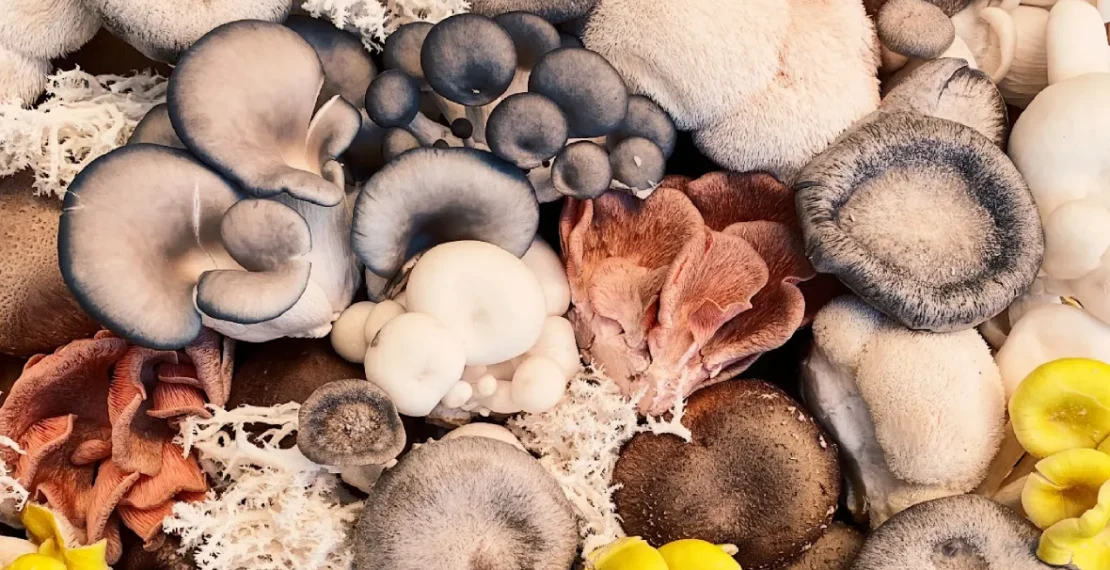
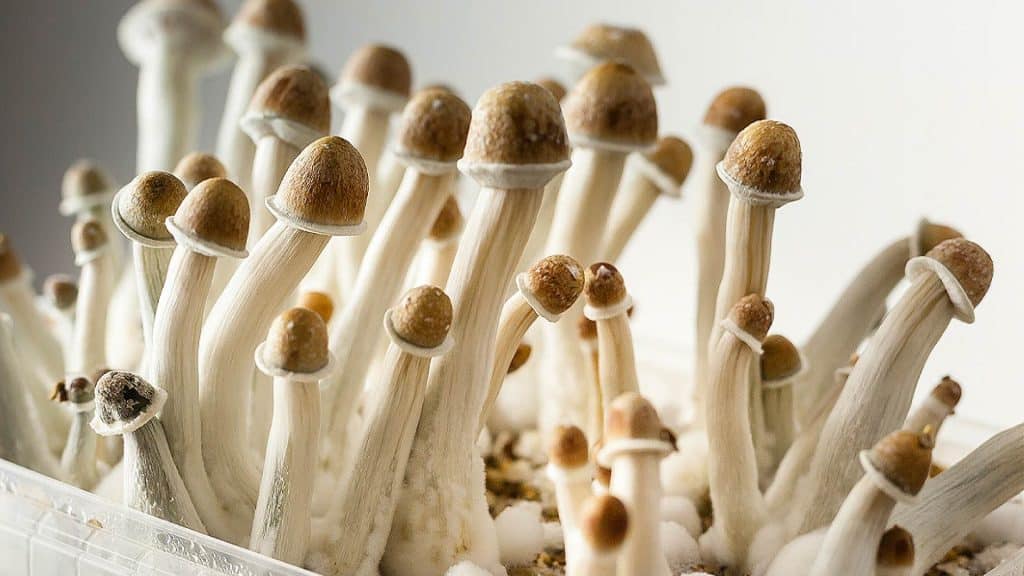
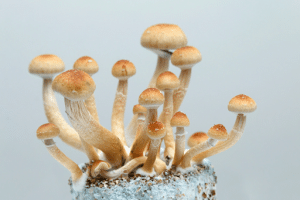
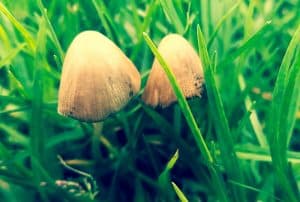
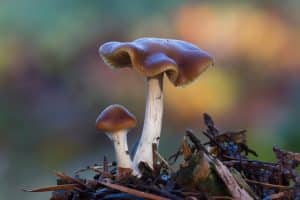
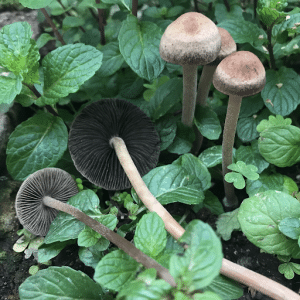
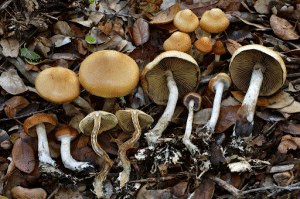
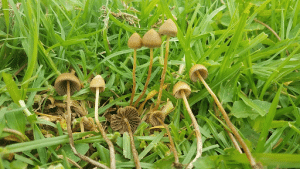
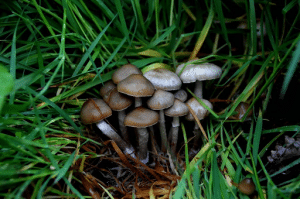
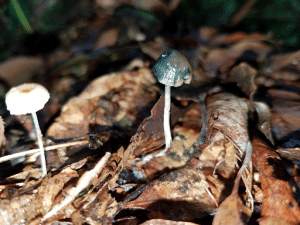
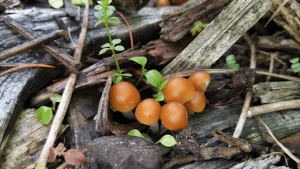
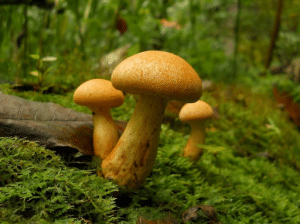
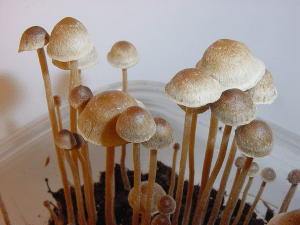
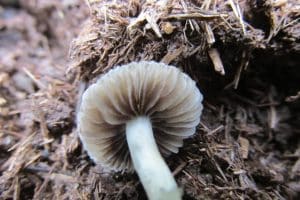
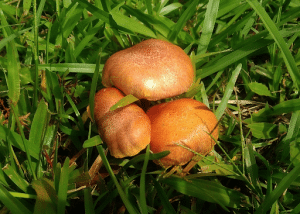
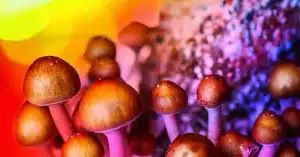

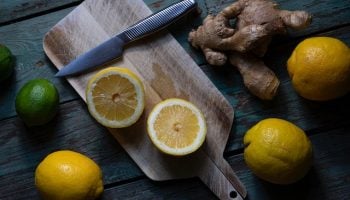
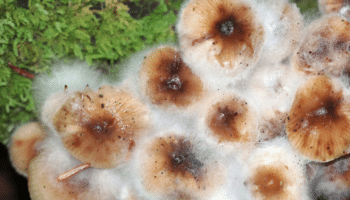



Excellent choice of mushrooms types to display. Psilocybin mushrooms has great potentials which are still to be discovered. Thank you for this write-up. Indeed you have a great website.
Of all the things I read that said they had info did not. This was very informative for me and I am great full of your easy read. Pictures and specific facts make me feel more comfortable in this journey. Thank you